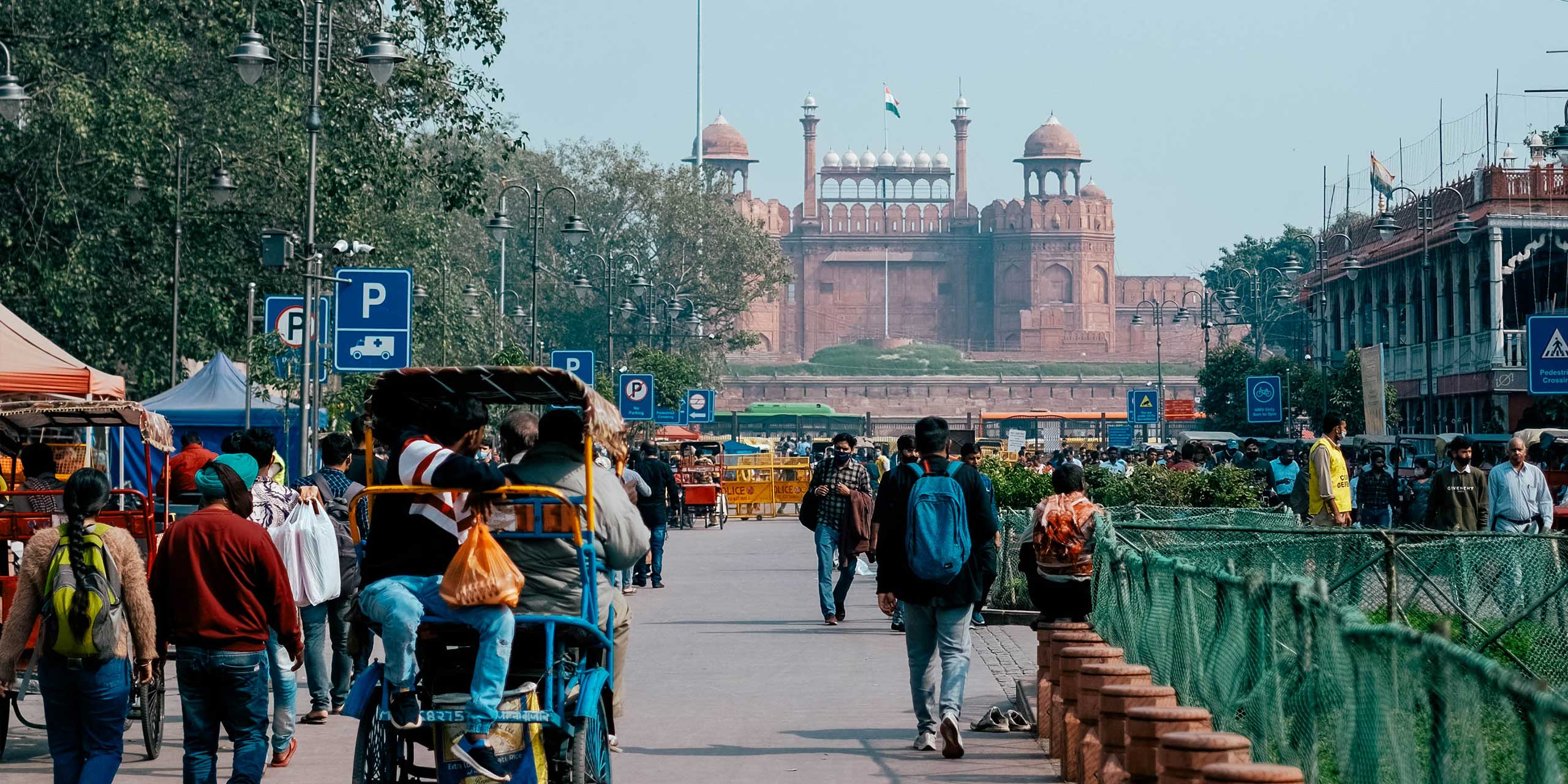
Anubhav Sapra crosses Chandni Chowk and disappears into a scrum of moving bodies. Through a purple evening sky and the rip tide of rickshaws crossing the city’s ancient bazaar, I can just make out his burnt orange jacket outlined against a rundown-looking food stall. Minutes later, he emerges from the other side of the street bearing aluminum foil snack plates.
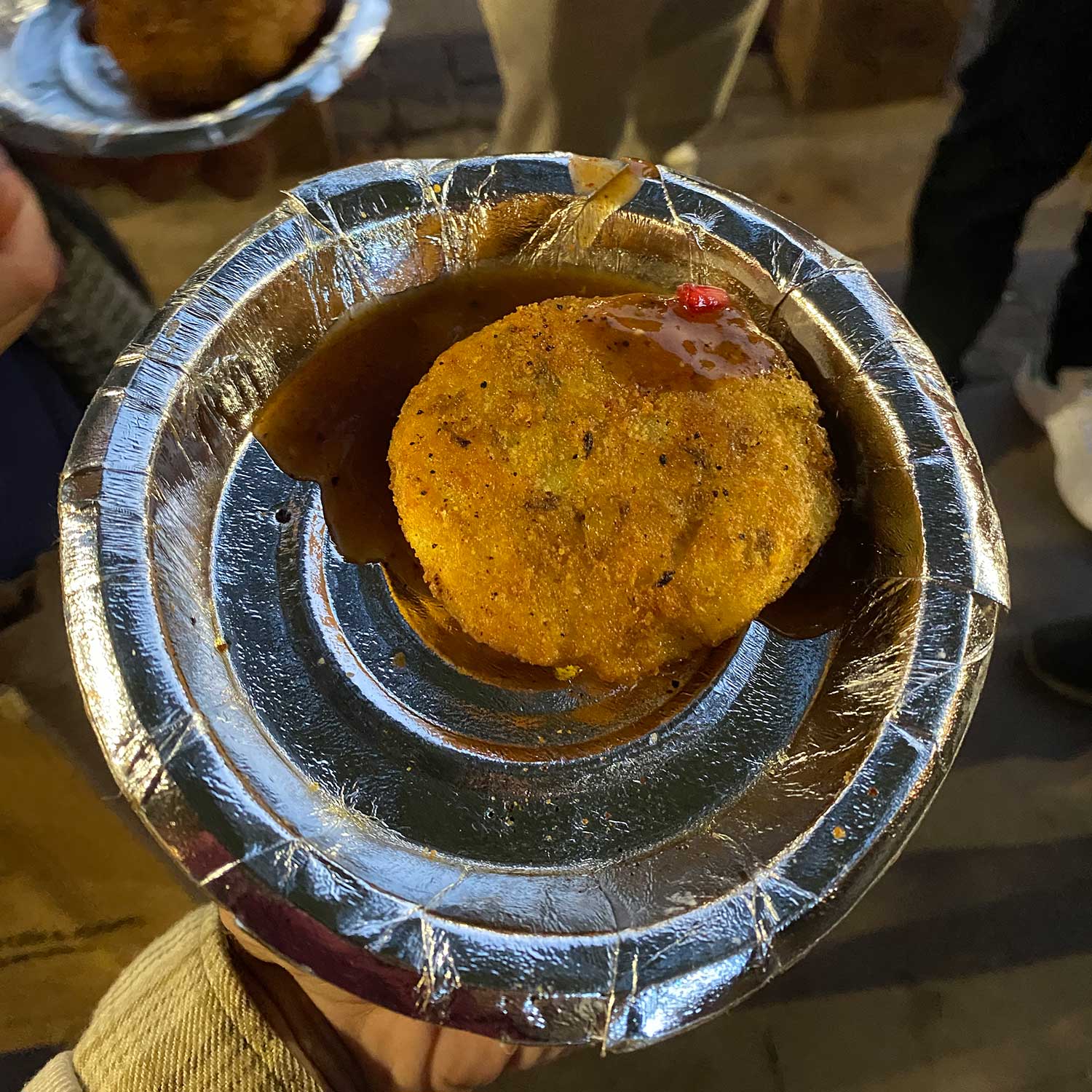
“Aloo tikki,” he says, potato fritters topped with a sweet and sticky tamarind chutney. They’re warm against the hands on a cold December night and a welcome mental distraction from the chaotic streetscapes. There’s a total assault on the senses, and then there’s Chandni Chowk.
“This is just an amuse bouche,” he warns me. “We have a lot ahead of us tonight, so save space.”
Now one of Delhi’s most famous food authorities, Sapra helps curate roving feasts through Old Delhi—or Shahjahanabad, the walled capital of Mughal India until its fall in 1857, where today nearly 300,000 people live cheek-by-jowl among the crumbling leftovers of the ancient empire.
As you nibble on goat brain curry, tender chicken skewers, and syrup-coated jalebi fresh from the fryer, Sapra reveals the district’s most treasured street vendors and mom-and-pop shops in a way you would never be able to replicate on your own. “It took many years of research and even more trial and error,” he answers when asked how he whittled Old Delhi’s endless dining options down to just a dozen.
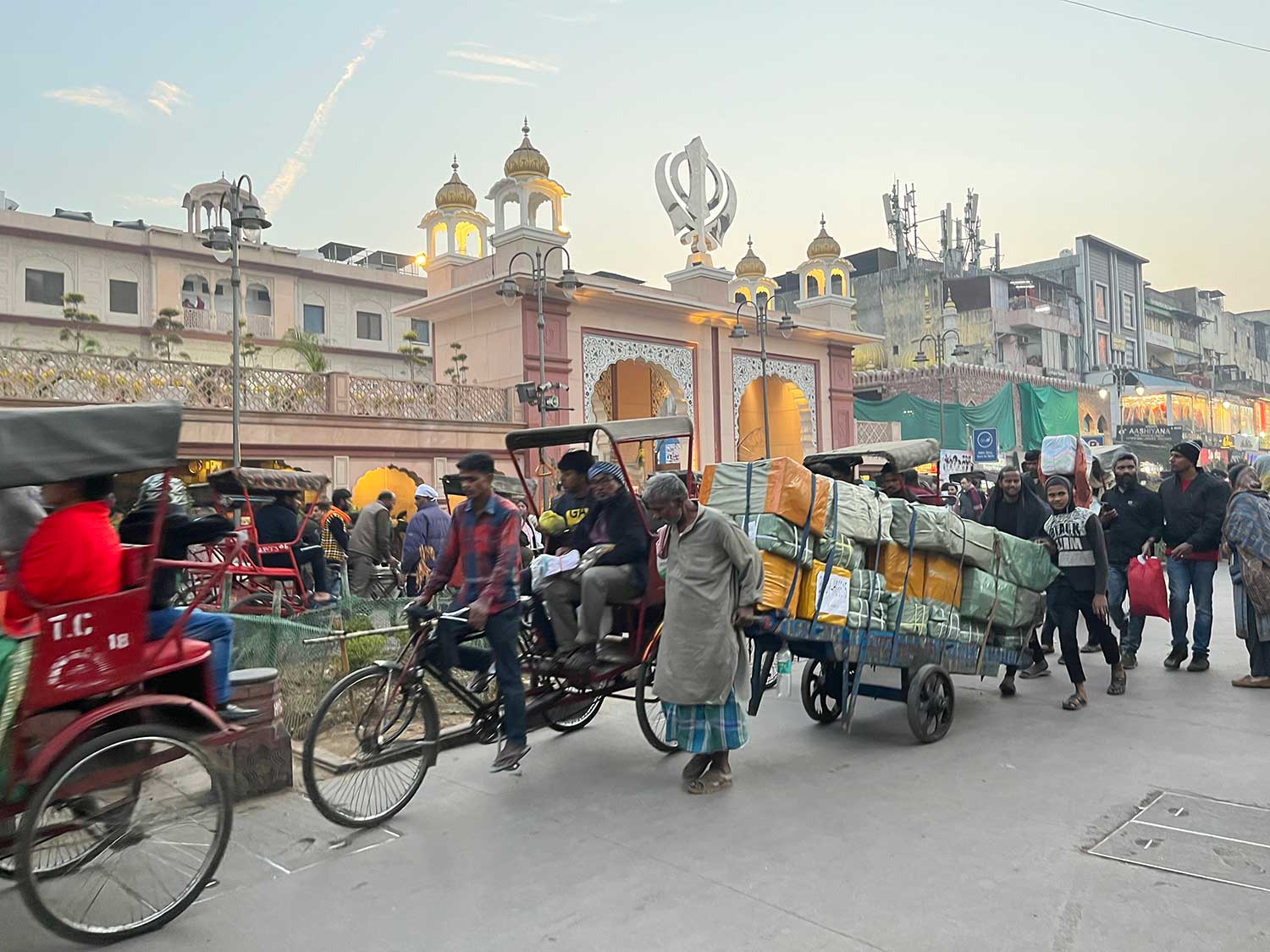
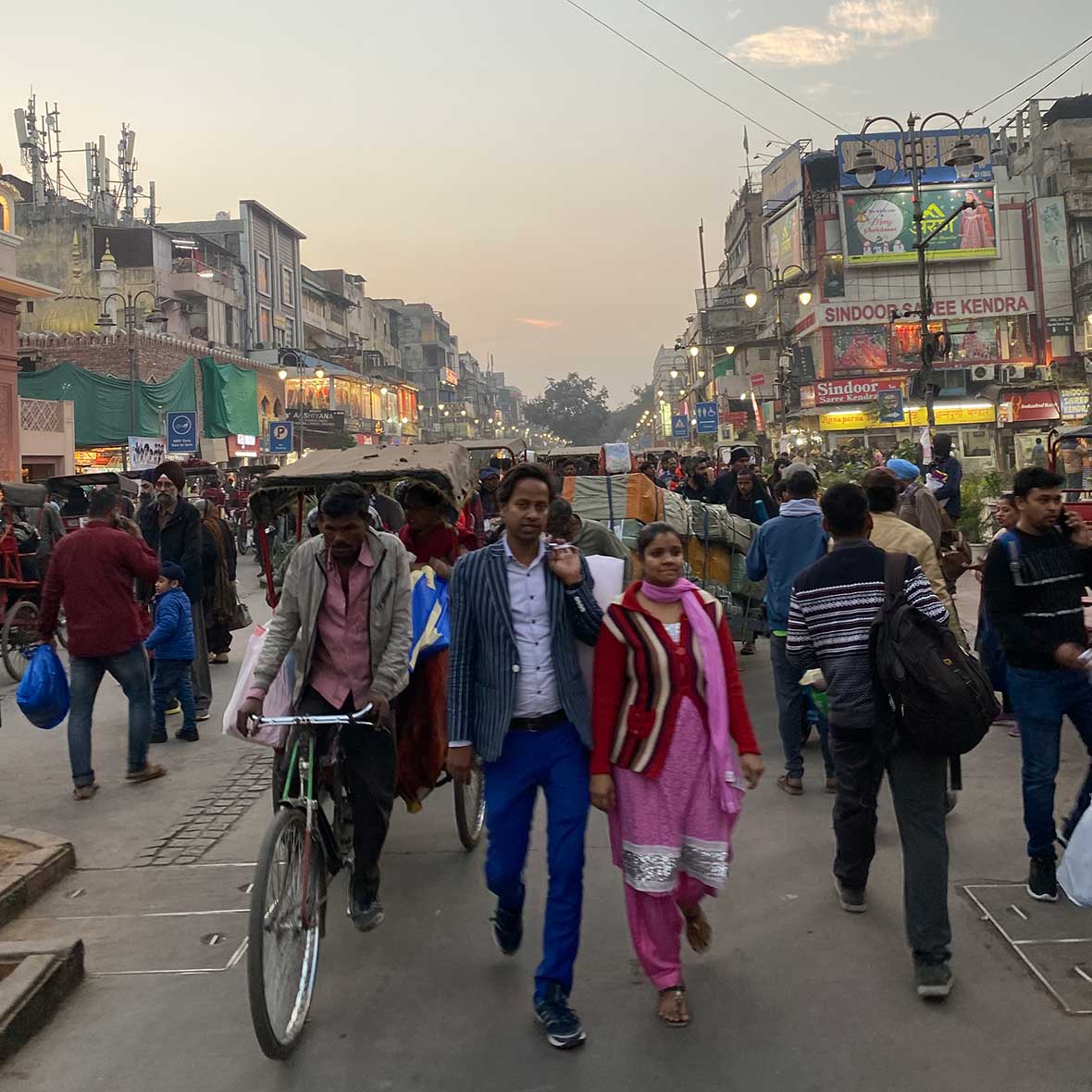
But his food walks aren’t just about food, he says. As I discovered over our nearly five-hour tour, they’re about demystifying this complex community and experiencing it through the eyes of a local.
After finishing our aloo tikki, Sapra shuttles us into a rickshaw, and we set off into the depths of Old Delhi. We squeeze ourselves past pedestrians, Royal Enfields, and the occasional cow as we wander down streets I couldn’t identify if Sapra were pointing them out on a map—he might be able to navigate this heaving district blindfolded, but retracing our steps would be impossible for a mortal like me.
Soon, though, we arrive at one street I can recognize: Paranthe Wali Gali, or “paratha lane.”
This narrow alley has been a nirvana for paratha fans since the 1870s. While the by-lane at one point had dozens of paratha vendors, just a few remain today. But each rank among the best in the city.
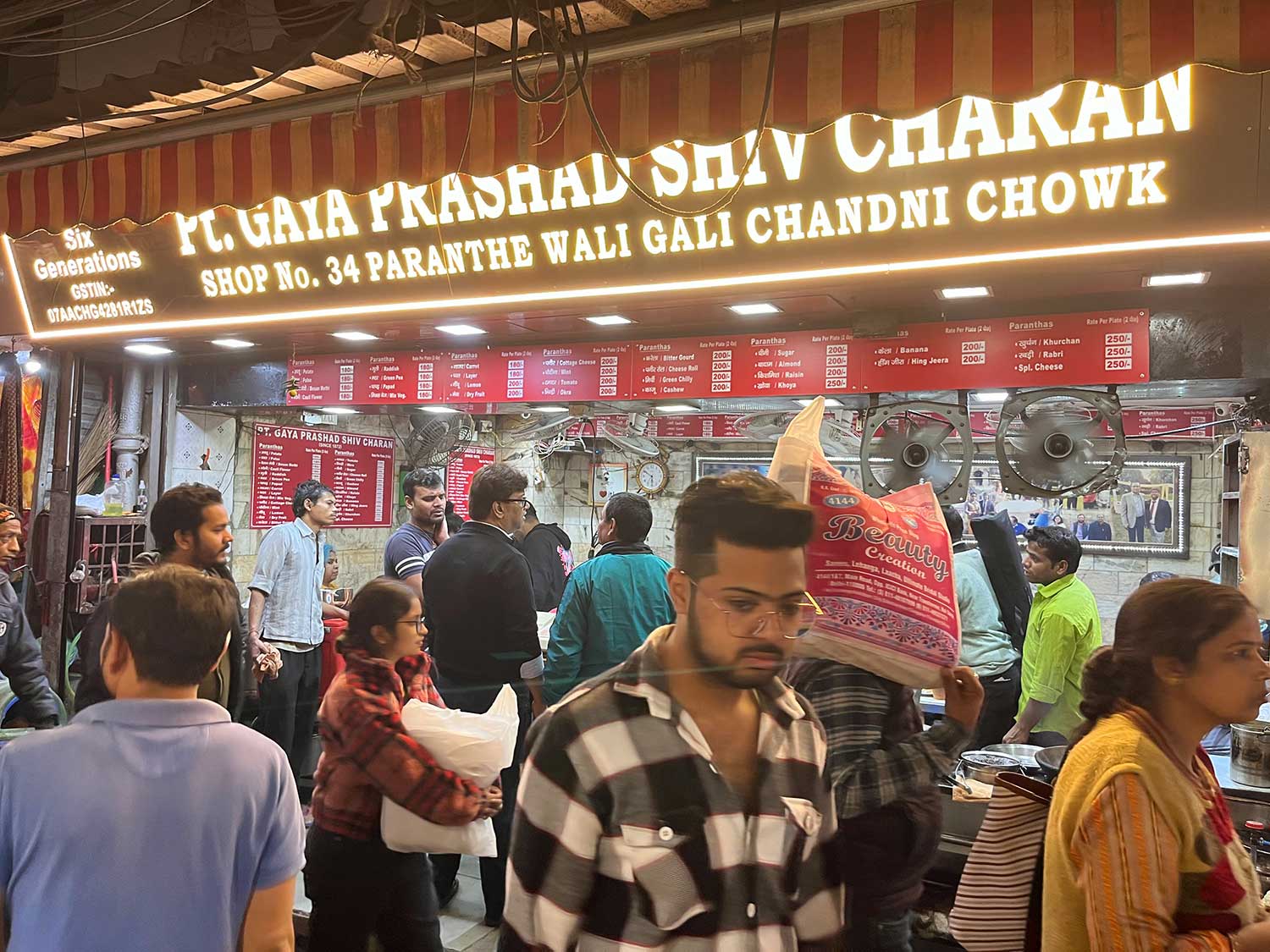
Sapra takes us to Gaya Prashad Shiv Charan, a sixth-generation, family-owned restaurant founded in 1872. There are three dozen different kinds of stuffed flatbread on the menu, from radish to green pea to potato. Typical of Delhi, he says, every paratha here is fried twice “for that extra layer of crispiness.”
He makes sure we try several, including one stuffed with an unusual lemon and herb filling—an aromatic and somewhat antiseptic mixture that receives mixed reactions from the group.
The paratha maker isn’t the only centuries-old establishment we visit. On the corner of Dariba Kalan, hungry crowds huddle in front of a jalebi shop that’s been in the same spot since 1884, according to Sapra. Like an assembly line at the Ford factory, one man quickly flips dough made from spiced wheat flour in a vat of hot oil while another wraps ready pieces in paper and passes them out to customers.
While we wait for our jalebi fix, Sapra hands me a samosa stuffed with potatoes and peas. It’s flaky and fresh, and the spice-flecked filling tastes perfectly balanced.
“This shop does just two things: samosas and jalebi. That’s it,” he says.
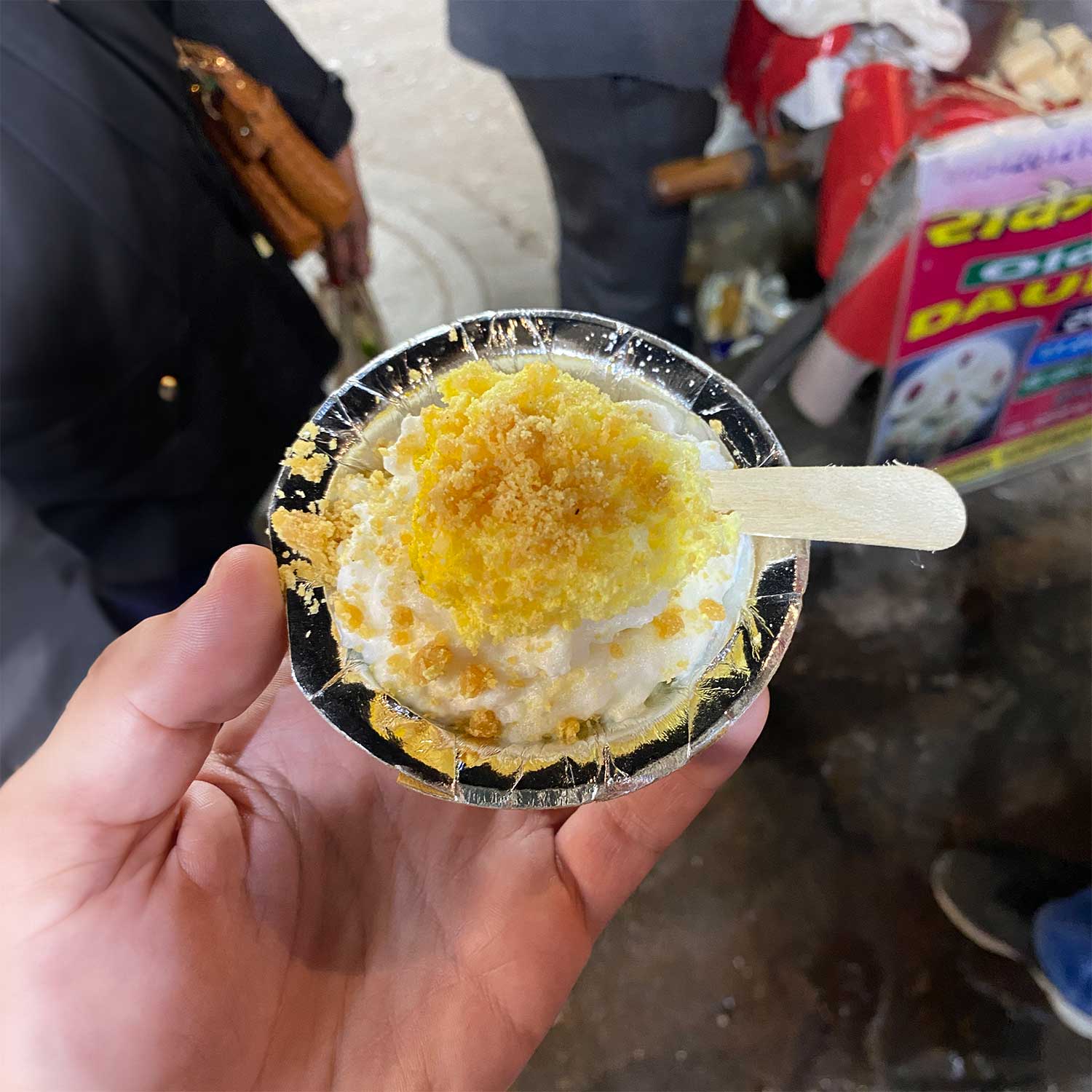
When I finally get my hands on the jalebi, it’s clear that the shop has perfected both in its 150 years of existence. The dough, dressed lightly in a rose-scented syrup, has an excellent crunch—not a given for a treat that, when prepared haphazardly, can be gloopy and tooth-achingly sweet.
Although not all the vendors we visit can trace their lineage back as far as these first two, each offers flavors that betray a hard-earned expertise in their specialties. Some serve dishes rarely seen outside Delhi, too.
As we’re making our way toward the Jama Masjid, Delhi’s biggest mosque, Sapra stops us to point out a rare treat: daulat ki chaat. This sweet treat is made from chilled buffalo milk and cream that’s whipped into a light, airy foam and topped with saffron and pistachios. It’s as delicate as meringue and has a subtle nutty flavor—a combination of flavors and textures unlike any I’ve ever had.
“It’s only found in winter and takes a lot of effort to make,” Sapra shares. “It’s a special find.”
After a tea break at a back-alley chaiwala, we wander past spice markets, 17th-century silver shops, and a staggering number of businesses catering to weddings: dress shops, decorators, tailors, jewelers.
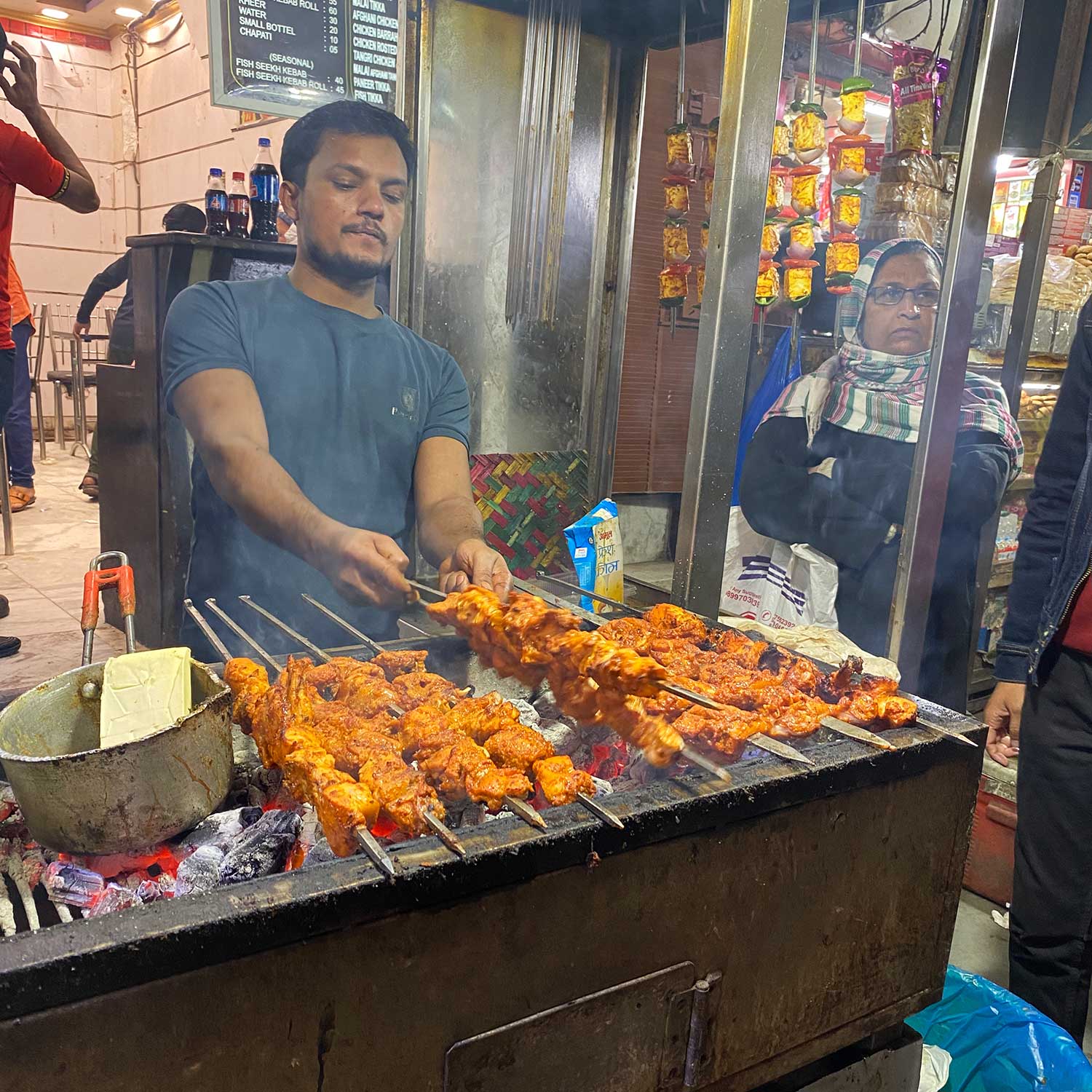
“Winter is wedding season,” says Sapra. “Young couples come to Old Delhi to get what they need for their big day.” Or rather big week. Weddings are days-long affairs in India, not to mention lucrative occasions for businesses like the ones fanning out across the district.
We leave the wedding shops behind and hop into another rickshaw to find the night’s entrées, chicken skewers, on the streets running to the Jama Masjid.
The legacy of India’s Muslim Mughal rulers lives on in North Indian cuisine. Across Delhi, you’ll find kebab shops and vendors serving succulent chunks of meat cooked over charcoal grills or in tandoors. But nowhere more than the streets around the Jama Masjid, the heart of the city’s Muslim community.
We head to Tasty Corner to have its chicken malai tikka, tender chunks of chicken softened by a lightly spiced cream-based marinade. Each bite practically melts when I bite into it, and the naan it comes with is the perfect tool to soak up the sauce on the plate.
It’s so good—especially the skewers topped with ghee and black pepper—that I come dangerously close to breaking Sapra’s cardinal rule: don’t get full before the end of the tour.
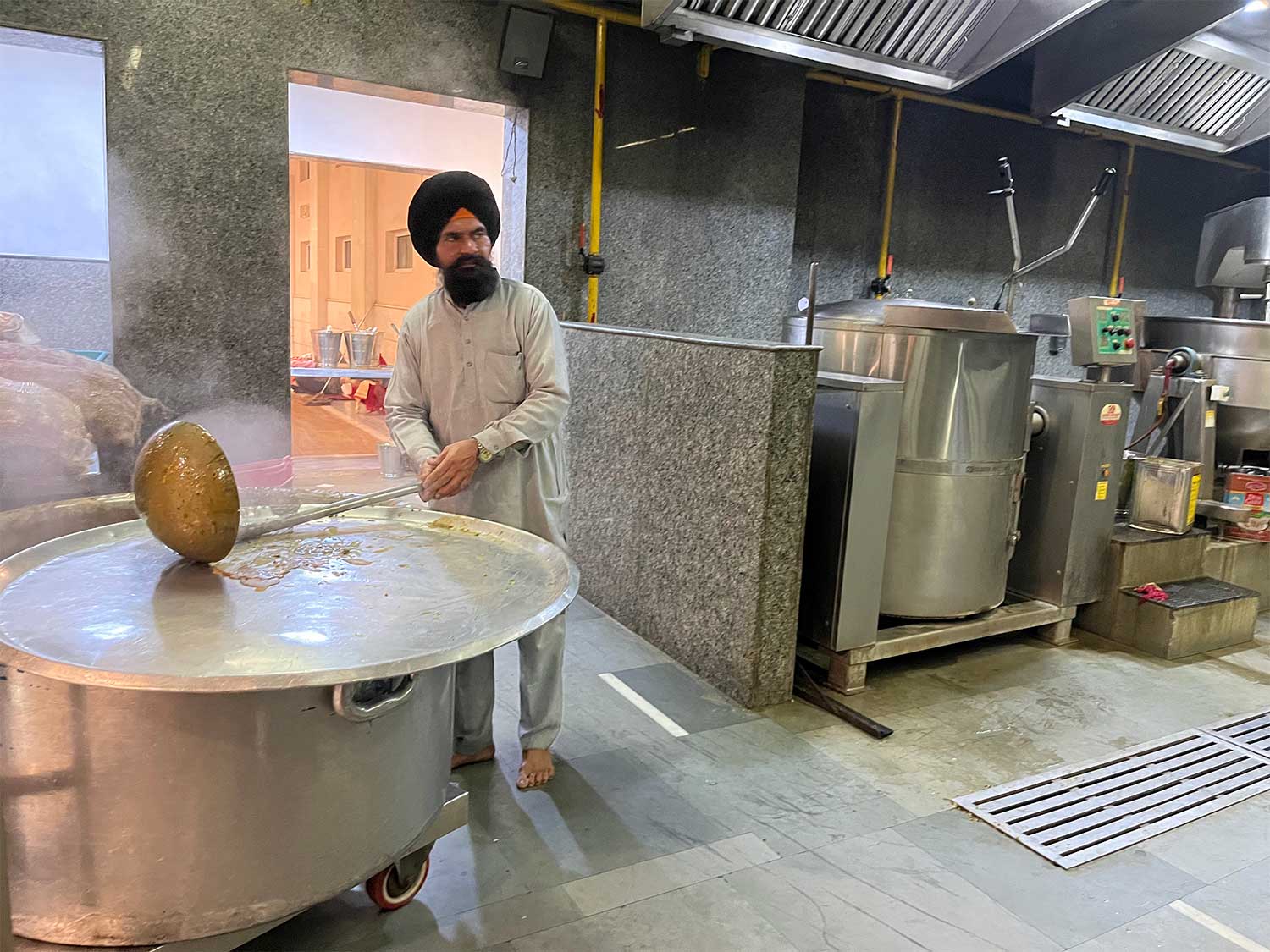
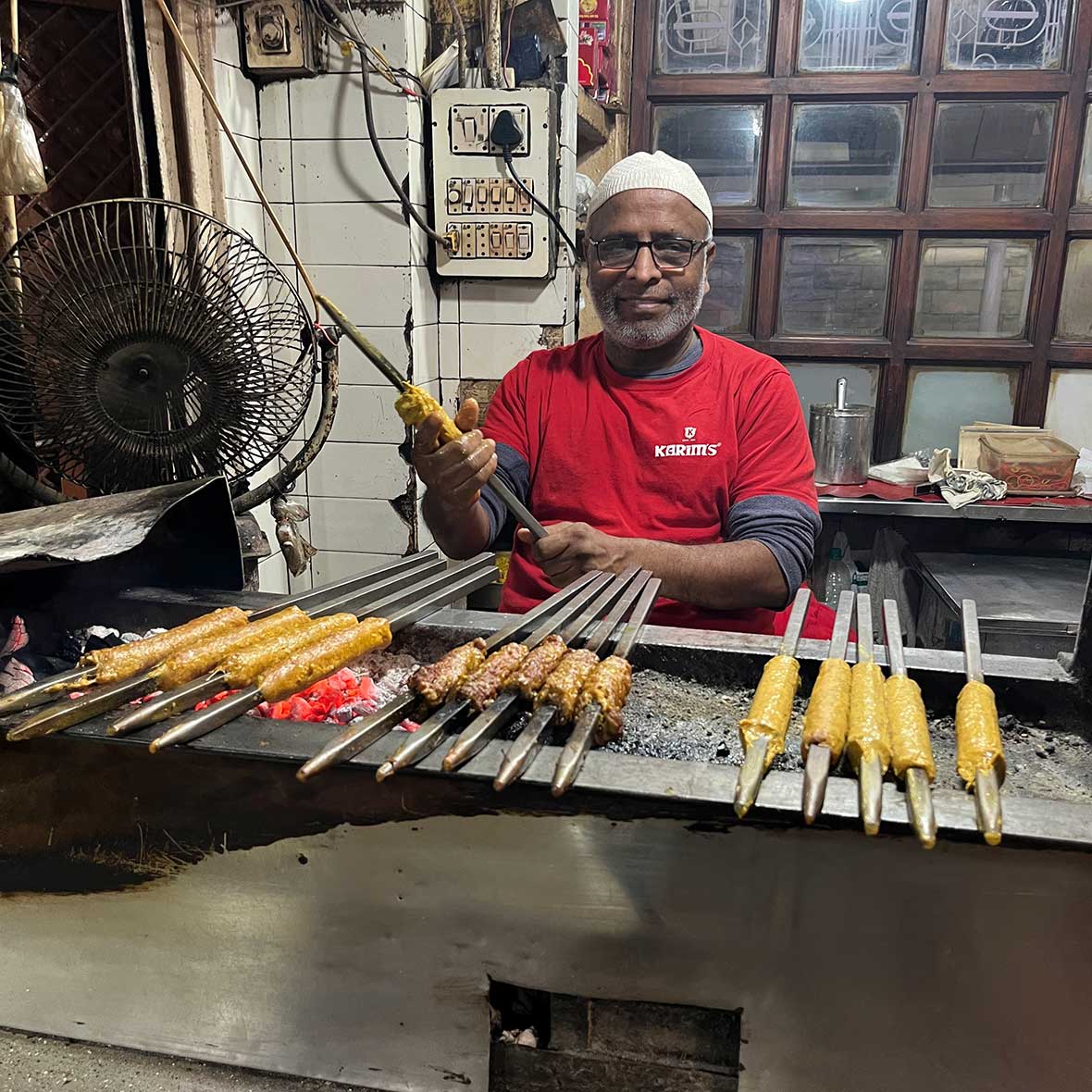
Before we wrap up, we go back to Chandni Chowk. Sapra wants to show us the Gurudwara Sis Ganj Sahib. One of Delhi’s nine historical Gurudwaras, or Sikh temples, the holy site shines like a beacon over the old bazaar and its ramshackle buildings.
Though he isn’t Sikh himself, Sapra says he admires the religion for its egalitarianism.
“Every day, this temple serves thousands of meals,” he says, as he leads us into a community kitchen where volunteers prepare industrial-sized vats of lentils and flatbread. “No matter your standing in society—or even your religion—you’re welcome to eat here for free. Everyone is on the same level.”
It’s one of many insights Sapra shares that paints a fuller picture of Old Delhi. He leads us into a Jain neighborhood, where he tells us about their unique dietary restrictions to prevent killing plants that have to be uprooted. Later, he explains how Karim’s, where we try goat brain curry and tender mutton kebabs, serves heritage recipes formed in the Mughal emperor’s court.
“Old Delhi is made up of many different cultures pressed together in a small space,” says Sapra, as we fill up what space we have remaining on several kinds of kulfi, India’s denser, richer answer to ice cream.
“It’s chaotic, but there’s harmony in it, too. In every respect, Old Delhi is a feast for the senses.”
